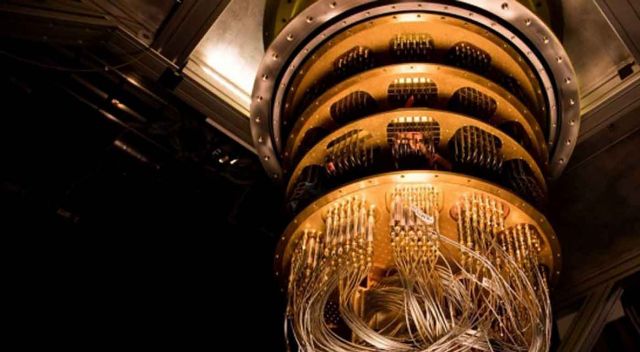Achieving Quantum Supremacy
UC Santa Barbara / Google researchers demonstrate the power of 53 entangled qubits.

Researchers in UC Santa Barbara/Google scientist John Martinis' group have made good on their claim to quantum supremacy. Using 53 entangled quantum bits ("qubits"), their Sycamore computer has taken on — and solved — a problem considered intractable for classical computers.
"A computation that would take 10,000 years on a classical supercomputer took 200 seconds on our quantum computer," said Brooks Foxen, a graduate student researcher in the Martinis Group. "It is likely that the classical simulation time, currently estimated at 10,000 years, will be reduced by improved classical hardware and algorithms, but, since we are currently 1.5 trillion times faster, we feel comfortable laying claim to this achievement."
The feat is outlined in a paper in the journal Nature.
The milestone comes after roughly two decades of quantum computing research conducted by Martinis and his group, from the development of a single superconducting qubit to systems including architectures of 72 and, with Sycamore, 54 qubits (one didn’t perform) that take advantage of the both awe-inspiring and bizarre properties of quantum mechanics.
"The algorithm was chosen to emphasize the strengths of the quantum computer by leveraging the natural dynamics of the device," said Ben Chiaro, another graduate student researcher in the Martinis Group. That is, the researchers wanted to test the computer’s ability to hold and rapidly manipulate a vast amount of complex, unstructured data.